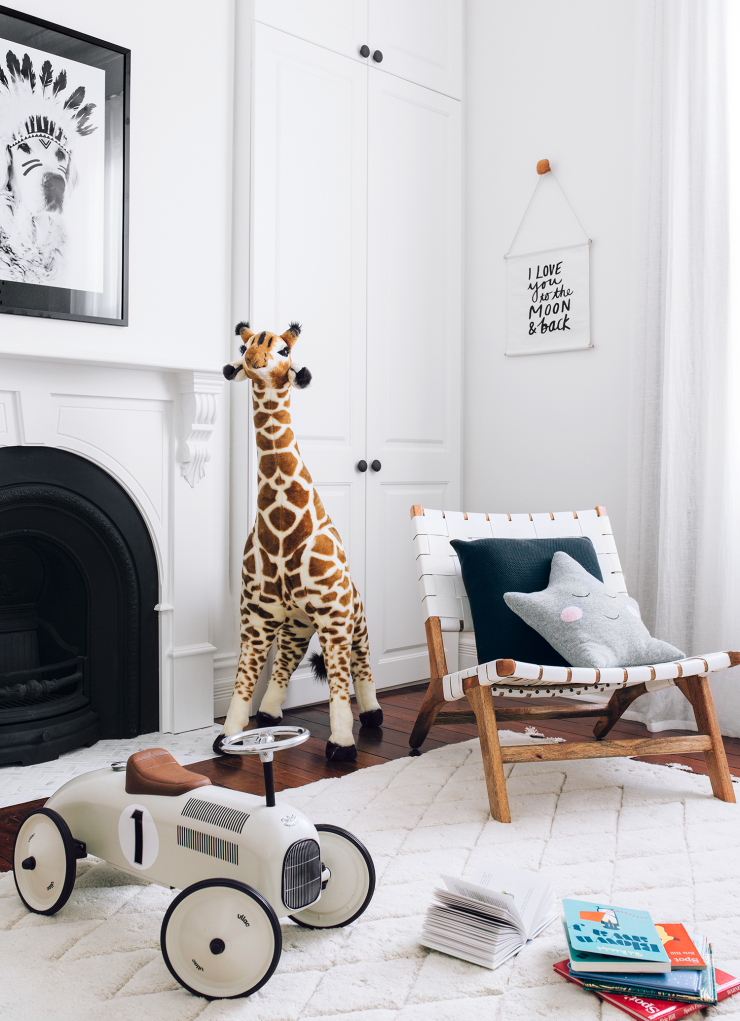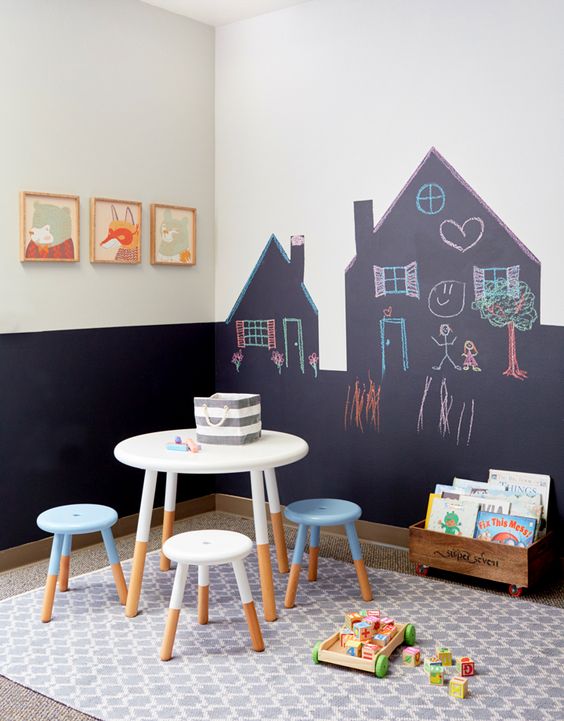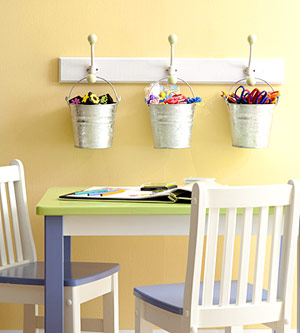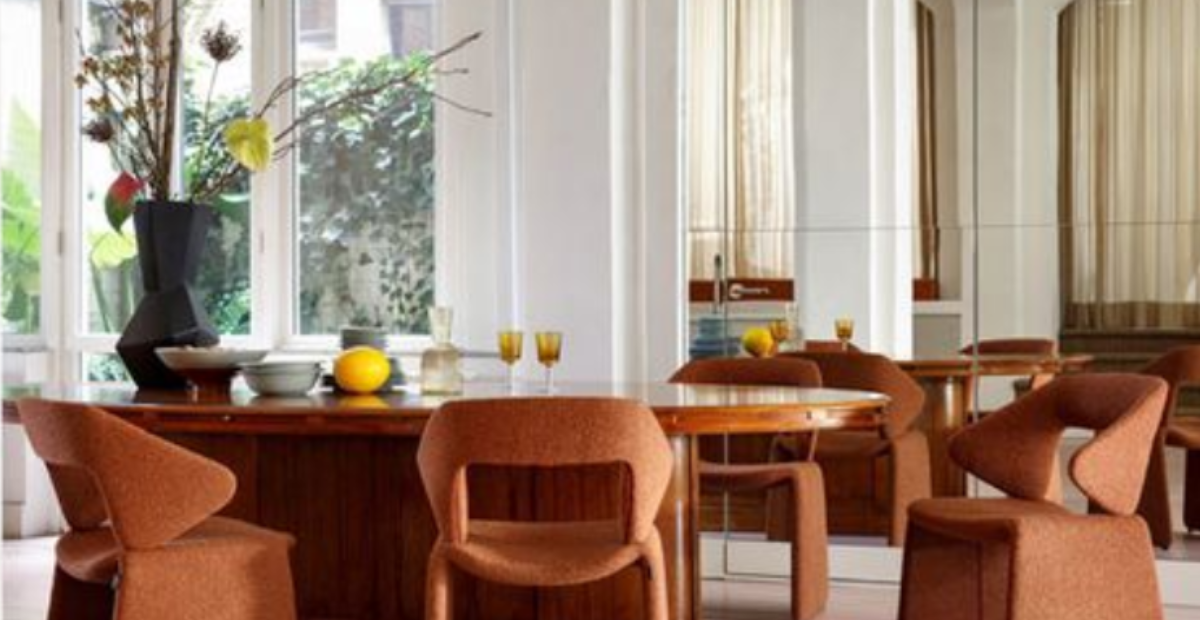These days many people are faced with the predicament of siblings having to share a room. I remember how hard it was trying to set up a bedroom for my son so I know it can feel like a daunting task when you’re faced with the reality of setting up a room for kids of different ages, especially if they’re a girl and a boy!
When it comes to siblings sharing a bedroom I know a lot of people thing OMG this will be carnage, how am I going to get them to share – they’ll kill each other!! They’re two completely different people who have differing interests, how am I going to appeal to both??
It’s ok you don’t have to reach for that bottle of wine just yet, I’m here to break it down and make it easy for you because there are solutions and they don’t have to cost the earth.
I’m going to show you how you can create beautiful bedrooms that both boys and girls can coexist in and if you play your cards right may never want to leave 🙂
First things first
Consider how you want the space to feel. Too many times when people think about creating a room for children they jump straight to colours and furniture and wanting to replicate a look from a magazine without considering some key points: the layout, what the room is for and how you want the space to feel.
Bedrooms especially can be a tricky space because you want to make the room fun and interactive for your children but also a place for rest. Whilst you can definitely have bright colours in a bedroom, the truth is if you make them too bright they can cause the space to be too stimulating so if it’s a tranquil space your trying to achieve bright colours probably aren’t the best.
My recommendation – consider neutral tones such as warm greys, whites and timber accents which will create a space that’s gentle and relaxing. Don’t get me wrong I’m not against colour (I love it) but when using it consider using complimentary shades of the same colour family or pastels. They create cohesiveness and allow you to inject colour into a space without it being too overwhelming.

Image by Better Homes & Gardens: via Pinterest

Image by petitandsmall.com: via Pinterest
Create individual spaces
Kids like adults are individuals and they want to feel like one. Even when children are young you can start to get a sense of who they are by what they like to play with or what colours and activities they may be drawn to.
Different ways to showcase children’s personalities in a bedroom:
Frame a picture of each child and hang it above their beds to show individual space.
Decorate each space with items that they love and make it a feature – for example you could install a shelf next to or above their beds (where ever space permits) and display items each child loves or collects – shells, rocks, toys, etc.
Hang pictures each child has drawn or painted on a string with little pegs. Or better yet frame some artwork their especially proud of and mount this on the walls on each side of the room.
If you have a toddler and baby sharing a room consider sticking wall decals on the toddler’s side and a mobile above the baby, this will create the feeling of separate spaces but cater to each child’s age and interests.

Image by lushhome.com via: Pinterest

Image by domainhome.com: via Pinterest

Image by winterdaisy.com via: Pinterest
Link the room together rather than divide
There’s a bit of a misconception that when you have 2 children in a bedroom you should divide the room so they feel as if they each have their own space, but there’s actual research to show this isn’t a good idea as it promotes the feeling of being isolated.
Instead keep the room unified by creating small areas for each child and a common play area.
Different ways you can link a room together:
Define each zone in the room by using décor items such as a rug to define a play zone or lighting to create a reading nook. This way the different zones in the room are defined making the whole space feel more organised.
Artwork is a fun and easy way to cater to individual tastes and create cohesiveness in a room.
Furniture can be functional but also provide abit of space between siblings without it feeling isolating. Keeping the furniture the same will create a unified look but let the accessories reflect individual personalities.
Consider bunk beds. Although individual beds will create less arguments over who gets the top, if you have limited space these are a great choice and you are still able to personalise each space.
Choose bedding that has similar prints but mix up the colour to suit each child’s preference or choose different colours that complement each other.

Image by oheightohnine.com.au via: Pinterest

Image by clemaroundthecorner.com via: Pinterest

Image by thebooandtheboy.com via: Pinterest

Image by remodelaholic.com: via Pinterest
Create common play areas
It’s a fact that children are territorial by nature so it’s important they have their own space to relax in and play on their own, but creating a communal play area in a bedroom is also key as it encourages them to play together and will hopefully teach them to share!
Ways this can work:
Create an interactive display space using easy materials such as cork or a magnetic board. This way both kids can show off their most prized possessions (like a dirty feather they’ve found at the beach that they INSIST on keeping) 🙂
Consider having a desk in the room for the kids to do art and get creative. If space doesn’t permit think about installing a desk that can be folded out from the wall, that way you save on much needed space.
Invest in some chalk paint. I know I’ve talked about this before but chalk paint is one of the easiest and cheapest ways to make a space functional and playful or if you’re not into something permanent check out removable chalk board decal stickers available on Ebay.

Image by younghouselove.com: via Pinterest

Image by stylebyemilyhenderson.com via: Pinterest
Storage
I know this is the bain of every parent’s existence but in a kids room more than anywhere else, storage is a must.
Ways to keep a shared room clutter free:
Create a place to store toys in any space you can using baskets, chests, boxes or labelled containers. This way kids can pull out toys and play with them whenever they want but they also learn that there is a place for everything.
Utilise cupboard space so that there’s a place for clothes and another space for toys that aren’t played with all the time or if your cupboard’s large enough include a small workstation in there that can be tucked away when the doors are closed.
Keep some storage such as coat hooks or shelving at a level a child can reach so you can help them understand where things go and hopefully become more organised.

Image by bitteshop.com via: Pinterest

Image by hgtv.com: via Pinterest

Image by babble.com: via Pinterest
I know it’s no small feat creating a space for children let alone 2! It can feel like a daunting task trying to cater to different personalities and ages, but I’m hoping this post has given you some ideas and cleared some of the inspiration blocks you may have been having.
And remember when you’re creating the space to have FUN because after all that’s what a kids room is all about. 🙂
Images & brand credits: betterhomes&gardens, petitandsmall.com, lushhome.com,domainhome.com, winterdaisy.com, oheightohnine.com.au, clemaroundthecorner.com, thebooandtheboy.com, remodelaholic.com, younghouselove.com, stylebyemilyhenderson.com, bitteshop.com, hgtv.com, babble.com via Pinterest
Are you a lover of all things interior but when it comes to your home you have no idea what your actual style is?
Check out my free and simple quiz that will help find your style and ways you can achieve the look.
For more inspiration on all things interior, sign up to the exclusive Facebook Community – Home. Life.Style.













